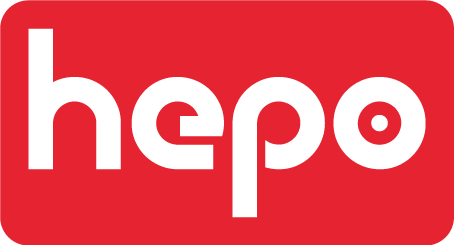PRODUCT TYPES AND CATEGORIES
Overview
The
Definitions Module within HEPO’s PIM embodies the values of integrity,
adaptability, and precision by offering a structured yet flexible framework for
product classification. This module distinguishes between two foundational
elements: Product Types and Product Categories. Each serves a unique
purpose—Types establish unchangeable attributes rooted in the product’s
intrinsic qualities, while Categories provide a flexible, business-driven
classification for strategic management. Together, these definitions enable
companies to balance data accuracy with the dynamic needs of the business,
supporting a product structure that is both reliable and adaptable to market
trends.
Product Type:
Immutable, Intrinsic Nature
Purpose:
Product Types in HEPO’s PIM represent the unchanging, intrinsic qualities of a
product, capturing core specifications that remain consistent across its
lifecycle. This structured approach allows each product to maintain its
authentic nature, preserving data integrity by distinguishing fundamental
characteristics from variable attributes.
Example:
For example, a material like wood has specific attributes—such as grain, durability,
and density—that distinguish it from metal, which is characterized by
conductivity and strength. HEPO’s PIM captures these inherent differences,
ensuring that these immutable qualities are consistently reflected across all
data interactions.
Implications:
Once a product’s Type is defined, its specifications become a reliable
reference throughout its lifecycle. This approach supports quality control and
regulatory compliance, particularly valuable in industries like manufacturing
and pharmaceuticals, where precise specifications are crucial.
Core Values
in Action:
Integrity:
Product Types ensure that data remains accurate and consistent over time,
reinforcing the trustworthiness of the information presented to all
stakeholders.
Gravitas:
By focusing on intrinsic qualities, HEPO emphasizes a serious, detail-oriented
approach to product management, ensuring that products are represented with
respect and depth.
Product Category:
Adaptable, Business-Driven Classification
Purpose:
Categories reflect a business’s internal strategy, allowing for a flexible
approach to grouping products by purpose, target market, lifecycle, or other
strategic criteria. These classifications evolve based on market conditions,
organizational goals, or consumer demands, offering an agile structure for
businesses to align products with shifting objectives.
Example: A
retailer might categorize products into “office furniture” and “home furniture”
based on the primary market or distinguish between “luxury” and “economy”
tiers. Such classifications enable businesses to make data-driven decisions
tailored to specific audience segments or seasonal needs.
Implications:
Categories allow businesses to respond quickly to changes in market dynamics,
such as consumer trends or new competitive pressures. By decoupling Categories
from immutable Types, HEPO ensures that companies can reclassify products as
needed without compromising data integrity, facilitating agility in a
fast-paced business landscape.
Core Values
in Action:
Adaptability:
Categories support fluid reorganization of product data, allowing for quick
pivots in response to internal strategies or external market demands.
Dignity:
This flexible classification respects each organization’s unique approach to
product management, creating a tailored structure that aligns with corporate
culture and brand identity.
Key Advantages of This
Structure
Data
Integrity and Reliability: By defining the intrinsic attributes under Types,
HEPO’s PIM ensures that essential specifications are safeguarded, promoting
data accuracy and maintaining a consistent foundation for decision-making. This
trustworthiness provides value to stakeholders by allowing them to rely on data
that reflects the product’s true nature.
Strategic
Flexibility and Responsiveness: Categories enable businesses to reorganize
their product data dynamically, supporting realignment with market demands,
shifts in consumer behavior, or internal restructurings. This flexibility
ensures that product data remains relevant and adaptable, enabling companies to
optimize their product offerings as conditions change.
Enhanced
Business Intelligence: The structured separation of Types and Categories
enhances the organization’s ability to generate insightful reports, forecast
trends, and conduct meaningful analyses. By maintaining data consistency while
allowing for flexible categorization, HEPO PIM supports advanced data
analytics, facilitating proactive decision-making.
Cross-Functional
Relevance: Product Types and Categories cater to diverse business
functions—from procurement to marketing—offering a unified yet versatile data
structure. This cross-functional relevance enhances collaboration across
departments and aligns product data with company-wide goals.
The
Definitions Module’s structure for Types and Categories in HEPO PIM provides a
balance between authenticity and adaptability, reinforcing HEPO’s vision of
values-driven, future-ready product management. By distinguishing between
immutable product Types and flexible Categories, this module upholds data
integrity while promoting strategic agility. HEPO’s PIM empowers businesses to
maintain core specifications consistently, enabling trusted, high-quality data
across all operations while supporting dynamic, business-focused product
categorization that aligns with the company’s evolving objectives.
